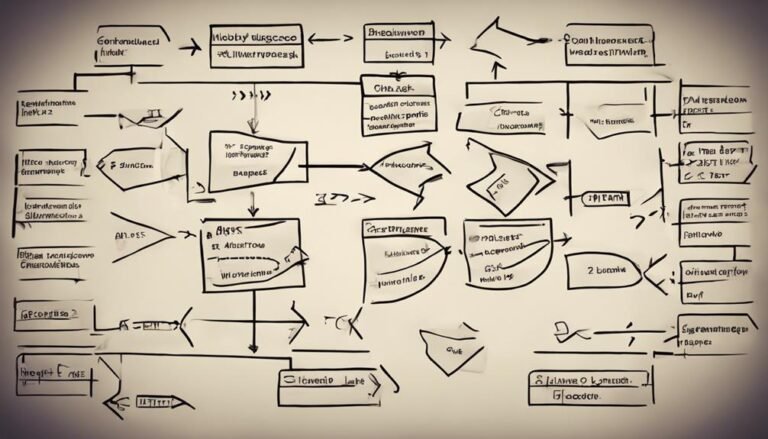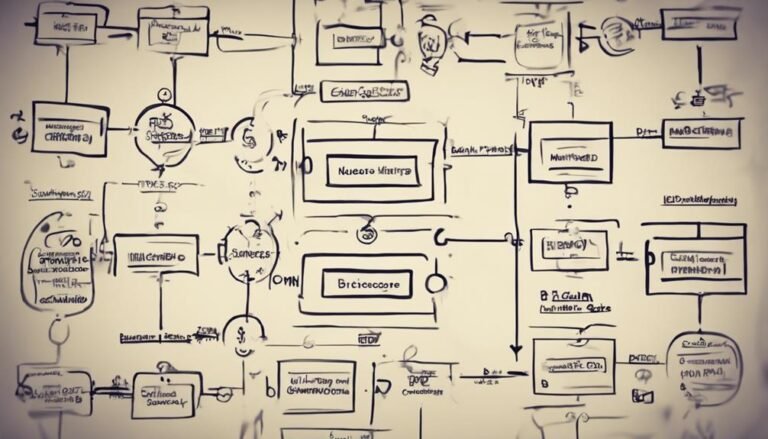Cost Reduction Strategies Through Automation
In an era where businesses are constantly seeking ways to optimize their operations and enhance efficiency, the integration of automation emerges as a pivotal strategy in achieving cost reduction objectives.
The ability of automation to streamline processes, minimize errors, and boost productivity holds significant promise for organizations looking to trim expenses without sacrificing quality.
By exploring the realm of automation, businesses can unlock a realm of possibilities that not only impact the bottom line but also revolutionize the way they operate.
Key Takeaways
- Automation streamlines processes to reduce costs effectively.
- Efficient automation tools lead to increased productivity and lower expenses.
- Implementing automation enhances workflow efficiency and reduces operational costs.
- Balancing automation and human interaction optimizes cost reduction strategies.
Importance of Automation in Cost Reduction
Automation plays a crucial role in achieving cost reduction goals by streamlining processes and increasing operational efficiency. By integrating automated systems into workflows, businesses can experience increased efficiency and reduced labor costs. Automation minimizes the need for manual intervention in repetitive tasks, allowing employees to focus on more strategic activities that require human expertise. This shift not only enhances productivity but also cuts down on labor expenses associated with routine operations.
Through automation, tasks that once demanded significant time and resources can now be completed swiftly and accurately. This results in a more streamlined operation where errors are minimized, leading to cost savings associated with rectifying mistakes. Moreover, automated processes can run continuously, ensuring round-the-clock productivity without incurring additional labor costs for overtime or shift differentials. As businesses strive to optimize their cost structures, leveraging automation to drive increased efficiency and decrease labor expenses has become a fundamental strategy in achieving sustainable cost reduction goals.
Identifying Automation Opportunities
In the quest for cost reduction, businesses must conduct a thorough analysis of their operations to pinpoint areas ripe for automation implementation. Process optimization and efficiency analysis are crucial steps in identifying automation opportunities. By scrutinizing current workflows and operational processes, companies can uncover inefficiencies that can be streamlined through automation. Task automation plays a vital role in this process, where repetitive and rule-based tasks can be automated to improve overall productivity and reduce human error.
Technology integration is another key aspect to consider when identifying automation opportunities. Evaluating the existing tech stack and determining where new automation technologies can be seamlessly integrated is essential. Businesses should look for solutions that not only automate tasks but also work harmoniously with their current systems to maximize efficiency gains.
Implementing Robotic Process Automation (RPA)
An effective approach to enhancing operational efficiency and reducing costs within businesses involves the strategic implementation of Robotic Process Automation (RPA). RPA uses software robots or ‘bots’ to automate repetitive tasks, allowing employees to focus on more complex activities. By implementing solutions like Rinkt RPA, organizations can streamline workflows, increase efficiency, and reduce errors significantly.
One key benefit of RPA is its ability to work 24/7 without breaks, leading to increased productivity and faster task completion. This round-the-clock operation can result in substantial time savings and enhanced output accuracy. Additionally, RPA can handle high-volume tasks with precision, minimizing the risk of human errors that can occur due to fatigue or monotony.
Moreover, RPA can be seamlessly integrated with existing systems, eliminating the need for costly and time-consuming system overhauls. This adaptability ensures a smooth transition and rapid realization of benefits. Overall, the implementation of RPA offers a practical solution for organizations looking to optimize processes, increase efficiency, and reduce errors in a cost-effective manner.
Leveraging AI and Machine Learning
To further optimize operational efficiency and cost reduction strategies, organizations can leverage AI and Machine Learning technologies to enhance decision-making processes and streamline complex tasks. By incorporating AI applications and machine learning algorithms into their operations, companies can achieve significant improvements in various areas:
- Predictive Maintenance: AI can analyze historical data to predict when equipment is likely to fail, enabling proactive maintenance and reducing downtime.
- Customer Service Automation: Implementing AI-powered chatbots can efficiently handle customer inquiries, reducing the need for human intervention.
- Fraud Detection: Machine learning algorithms can identify patterns indicative of fraudulent activities, helping organizations detect and prevent fraud in real-time.
- Inventory Management: AI can analyze sales data, forecast demand, and optimize inventory levels, leading to reduced carrying costs and minimized stockouts.
Streamlining Data Management Processes
Efficient data management processes are critical for organizations aiming to optimize operational performance and enhance decision-making capabilities. Data optimization and efficiency improvement are key focuses when streamlining data management processes.
By implementing automated data capture, organizations can reduce manual errors and improve data accuracy. Utilizing data deduplication tools helps in minimizing redundancy and ensuring data consistency across systems. Employing data integration solutions streamlines the process of consolidating data from various sources, enabling a holistic view of information for better analysis. Data governance frameworks play a vital role in ensuring data quality, security, and compliance with regulations.
Moreover, investing in data storage solutions that offer scalability and data retrieval efficiency can enhance overall data management processes. Implementing data cleansing processes regularly helps in maintaining high-quality data and improving the effectiveness of analytics and reporting. By continuously monitoring and optimizing data management workflows, organizations can achieve cost savings and operational efficiencies while leveraging data as a strategic asset for informed decision-making.
Enhancing Customer Service Automation
Utilizing advanced automation technologies in customer service operations can significantly enhance efficiency and satisfaction levels. By automating certain aspects of customer service, businesses can streamline processes, reduce response times, and ultimately improve customer satisfaction.
Here are four key ways in which enhancing customer service automation can benefit organizations:
- 24/7 Availability**: Automation allows for round-the-clock customer support, addressing queries and issues outside regular business hours, leading to increased customer satisfaction.
- Personalization: Automated systems can analyze customer data to provide personalized responses and recommendations, enhancing the overall customer experience and satisfaction levels.
- Quick Response Times: Automation enables instant responses to common customer inquiries, reducing wait times and improving overall efficiency in addressing customer needs.
- Consistency**: Automated systems ensure that responses and solutions provided to customers are consistent across all interactions, leading to a more reliable and satisfactory customer experience.
Monitoring and Measuring Automation Impact
Monitoring and evaluating the impact of automation on various operational aspects is crucial for assessing its effectiveness and identifying areas for improvement in customer service delivery. Measuring effectiveness involves tracking key performance metrics to gauge the success of automation implementation. Performance metrics such as response times, resolution rates, and customer satisfaction scores can provide valuable insights into how automation is influencing customer service operations.
By analyzing these metrics, businesses can determine the efficiency gains brought about by automation. For instance, a decrease in average handling time per customer query could indicate that automation tools are streamlining processes effectively. On the other hand, if customer satisfaction scores decline after implementing automation, it may suggest that certain aspects of the automated system need refinement to better meet customer needs.
Regularly monitoring and measuring automation impact allows organizations to make data-driven decisions to optimize their customer service delivery. It also enables them to adapt and improve automation strategies to ensure they align with the overall business objectives.
Conclusion
In conclusion, the implementation of automation strategies is crucial for organizations looking to reduce costs and improve efficiency. As the saying goes, ‘work smarter, not harder.’
By identifying automation opportunities, leveraging technologies such as RPA, AI, and machine learning, streamlining data management processes, and enhancing customer service automation, companies can achieve significant cost savings and operational improvements.
Monitoring and measuring the impact of automation is essential for continuous optimization and success.







